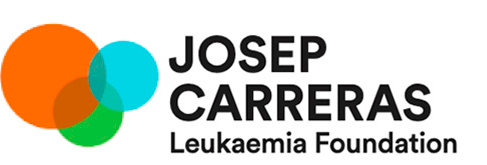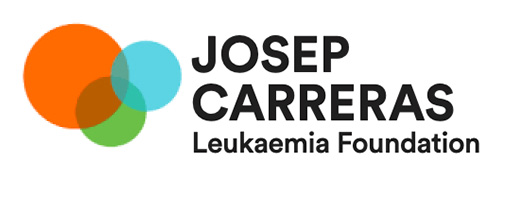FAQ
FAQ
We would like to share with you some of the most frequently asked questions about bone marrow donation:
In general terms, any healthy person between the ages of 18 and 60can be an unrelated donor of haematopoietic progenitors, provided that they do not suffer from any disease that could be transmitted to the recipient and that they do not suffer from any disease that could endanger their life as a result of the donation.
As of 2018, only NEW DONORS between the ages of 18 and 40 years are included in the registry. This is due to the goal of rejuvenating and optimising the composition of our donor registry, as younger donors (under 40 years of age) are the most sought after and have the best clinical outcomes for transplant patients.
One of the main risks of the registers is the ageing of their data, if the number of registrations of persons in the above-mentioned age range is less than the number of persons to be removed from the register because they are over 60 years of age. We therefore need to be aware of the importance of a dynamic registry, and the relevance of proper information and promotion of donation.
Generally speaking, the donor must not have a personal history of cardiac, hepatic, autoimmune, infectious-contagious or neoplastic diseases. Nevertheless, at REDMO we present to you one by one the most frequently asked questions we receive regarding bone marrow donation. In addition, if you want to know more about the subject, you can consult the donor guide and watch an explanatory video, available HERE.
General questions and answers about bone marrow donation
Within the family group, siblings are the best donors for a patient in need of a blood progenitor cell transplant (popularly known as a “bone marrow transplant”), due to the hereditary characteristics of the human major histocompatibility complex (MHC).
However, only 25-30% of patients have the possibility of finding a compatible family donor, leaving the rest without access to this therapeutic practice.
The alternative to this lack of a family donor is to turn to voluntary donors registered in international donor registries. These international registers constitute the BMDW Network, which brings together 83 registers from 60 countries.
No, it is not the same thing. The spinal cord is located in the spinal column and transmits nerve impulses from the brain to the entire body and vice versa. Bone marrow, on the other hand, is the spongy tissue located inside the bones and it is where blood is produced thanks to it containing the body’s stem cells. These cells are also found in the blood of the umbilical cord and placenta of a newborn baby. Donating bone marrow does not interfere in any way with the spine or the nervous system of the human body.
No, according to Spanish and international law, such a donation is always altruistic. However, expenses arising from the donation, if any, will be covered, such as travel, accommodation for the donor and a companion if the collection is carried out in a city that is not where the donor usually resides, or the value of any working days that may be lost.
Populations have important genetic variations, including the major histocompatibility complex (MHC), which is of great importance for haematopoietic progenitor cell transplantation. This feature makes it difficult to find a compatible non-family donor for a given patient, so registries that pool thousands of donors are necessary for a successful search.
Before transplanting bone marrow, it is necessary to check that the donor and recipient are compatible. This means that the cells of these two people are so compatible that they can live together indefinitely in the recipient. In the transplantation process, the donor usually (70% of cases) donates by means of a cytapheresis or peripheral blood donation. Once the donation has been made, the product obtained is administered to the patient as if it were a transfusion. The stem cells will nest in the bone marrow of the recipient’s bones to produce healthy blood cells. Sometimes (30% of cases) bone marrow can also be extracted from a donor’s bone by puncturing the iliac crests (hip bone). The way the cells are collected will be assessed according to the patient’s needs and the donor’s opinion. (see explanatory video).
It is one of the two ways in which haematopoietic stem cells (colloquially called “bone marrow”) can be extracted from the donor and then infused into the patient. Apheresis is a type of donation in which only the circulating stem cells in the blood are selectively removed and the rest of the blood is returned to the donor. The stem cells are separated by centrifuging the blood in a machine to which the donor is connected with completely sterile, single-use equipment.
Stem cells are found inside the bones, but if the donor is administered a drug called “haematopoietic growth factor”, the cells can be mobilised into the circulating blood and thus extracted. After administering this “haematopoietic growth factor” for 4-5 days, the cells can then be removed from the blood by cytapheresis. On an outpatient basis, blood obtained from a vein in an arm is circulated through machines called “cell separators”, which select the stem cells. The rest of the blood is returned to the donor through a vein in the other arm. (see explanatory video)
The only side effect of bone marrow donation by puncture is possible pain at the puncture site; this pain usually disappears in less than 48 hours and is controlled with standard painkillers. As the puncture is performed in the operating theatre and under general anaesthesia, it carries the same risk as any intervention involving short-term general anaesthesia.
When donation is done by apheresis, the time during which the “haematopoietic growth factors” are administered, flu-like symptoms, such as aching bones and muscles, may be experienced.
It is decided by the donor and proposed by the patient’s physician. The haematology team treating the patient in need of a bone marrow transplant will always inform the donor registry conducting the search for a voluntary donor of their preferred method of procurement. Why? Well, because in some specific diseases it is preferable, for the patient’s future medical response, that the donation be carried out in one way or another. However, with this information, it is always the donor who has the final say.
No, under Spanish law, such a donation is anonymous. Public knowledge of the identity of the donor and his or her link to the recipient generates negative repercussions that can cause various kinds of problems for the persons involved.
No, far from it. When you register as a donor with REDMO, a blood sample is taken from you to check the HLA compatibility of your blood with that of the patients who are looking for a donor. Once included in REDMO, and thus in the international registry, the chances of compatibility and effective donation are very low (approximately 1 in 4,000). If you are found to be the best donor for a recipient, you will be contacted by your reference centre.
It depends on the autoimmune disease and its situation (whether it is controlled or not and degree of involvement). If you are receiving systemic treatment for its control (oral or intravenous, such as corticosteroids), you cannot be a donor. If you had an acute episode, but it is already controlled and without treatment, you can be a donor, although in these cases it is advisable to only donate marrow by puncture in the iliac crest since the growth factor needed to donate through peripheral blood could cause you a new acute episode.
Our body’s immune system is a recognition and attack system that differentiates between self and non-self and ensures the body’s defence against foreign agents, infectious micro-organisms, neoplastic cells, or normal cells transplanted from another person. A fundamental part of this immune system is the genetic information contained in all the cells of our body, which we call the HLA system (human leukocyte antigens).
The HLA system is primarily responsible for graft rejection when there is insufficient compatibility between a patient and a donor. If the HLA is the same between the two individuals, the patient’s body will not consider the donor’s cells as foreign and will not reject them. But if the transplant is a stem cell transplant, the transplanted cells are part of the donor’s immune system and are therefore capable of rejecting the recipient organism. Therefore, a high degree of HLA donor-recipient compatibility is required for the healthy donor cells to repopulate the patient’s body without being rejected and without producing rejection so that they can make the patient’s diseased cells disappear.
The genes of the HLA system are almost always transmitted en bloc. Each block is called a haplotype. The father contributes one haplotype and the mother another, giving rise to the HLA genotype, the genetic profile of the new being. This is why the greatest chance of finding a compatible donor is through siblings, as they are most likely to have inherited the same genetic material from their parents. This situation occurs in one in four patients, the rest will need to find an unrelated donor.
And how do we recognise each individual’s HLA? By studying the amino acid chains of the genes of the HLA system present in all cells, which we call alleles. In bone marrow transplantation, we focus on the A, B, C and DR alleles, with each individual having two expressions of each allele (one from the father and one from the mother). Thus, between patient and donor we compared eight alleles. The difficulty in finding donors who share the same HLA lies in the polymorphism of the alleles. There are 5,907 different A alleles, 7,126 B alleles, 5,709 C alleles, 29 DRA alleles and 3,331 DRB alleles. Basically, it’s like looking for a needle in a haystack! The more voluntary donors there are in the global donor registry, the more we increase the chances of patients finding an HLA match.
No, the necessary cells will be extracted at the collection centre closest to your home (authorised for this type of process) and from there they will be sent to the centre where the patient is.
No, you will be required to go to a specialised hospital, as not all of them perform this procedure (or have sufficient experience in doing so). From the list of such hospitals, you will be assigned to the one closest to your home.
No, you cannot register as a bone marrow donor to donate to a specific person. For what reason? If you are not a first-degree relative of the patient, the chances of compatibility with the patient are almost nil (except in cases of consanguinity). It is much simpler to find you a non-family donor match through REDMO from among the more than 33 million donors worldwide. In addition, donating to a known person would hinder the basic concept of anonymity.
Donation is always an anonymous act and whoever registers as a donor is willing to donate to anyone in the world who may need it without ever knowing who it will be.
If the donation is of bone marrow, a few days (2-3) of relative rest is recommended, but you will be able to perform all types of activities. As far as physical activities are concerned, it is advisable to perform moderate activities at first, avoiding high-performance activities. This precaution is taken to give the bone marrow time to regenerate and correct any anaemia that may remain after the donation. If the donation is of peripheral blood, the patient can return to normal life almost immediately.
If you have recently undergone these tests, you can request the results from the medical centre that performed them and take these results to the donor reference centre indicated by your Autonomous Community (see HERE) to register as a donor. If you did it years ago and did not save the results, you should start the process of registering as a bone marrow donor again. More information HERE.
If you decide to register as a bone marrow donor, can you change your mind afterwards?
Yes, any voluntary haematopoietic progenitor cell donor can change his or her mind at any time by contacting the Registry. However, in order to avoid this, we strongly insist that a person is fully informed before registering as a bone marrow donor.
There is no waiting list for blood progenitor cell transplantation. When a patient has an indication for an allogeneic (donor) transplant and needs an unrelated donor, an international search is performed. If the search for donor or umbilical cord blood units is unsuccessful and there is no possibility of transplantation, another type of medical treatment must be performed.
For every patient there is an ideal time and clinical condition for transplantation, after which the chances of successful treatment are reduced. The more donors there are, the better the patients’ chances of finding the “ideal” donor.
No, it is not necessary.
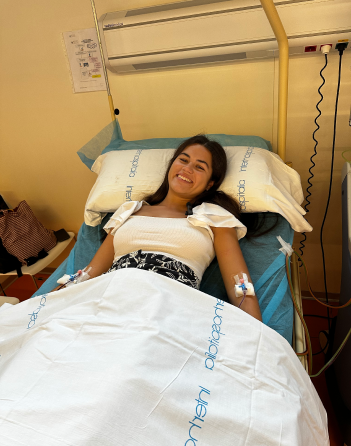
Carla
Bone marrow donor.
“She had been registered as a bone marrow donor for 6 years when REDMO called me. One day when I went to donate blood, they explained to me that I could also register as a donor. And I was encouraged. The day of the donation was quiet, but at the same time very exciting. I kept thinking: I hope everything works well and my donation can be useful for the patient. I would say thank you to him or her. This has also been a gift for me. Even though I may not meet the recipient of my donation, at the end we will be connected forever.”
Questions and answers on bone marrow donation and specific diseases
Unfortunately not. The fact of having suffered from a malignant, haematological or autoimmune tumour disease is a cause for exclusion. Only basal cell carcinoma of the skin and cervix in-situ are exceptions to this rule.
If suffering from coeliac disease is the ONLY pathology of the donor and he/she is asymptomatic without treatment, he/she can register as a bone marrow donor. Donation, if necessary, would have to be done by puncture of the iliac crests and not by cytapheresis. In any case, it is important that the donor informs the donor registry of his/her coeliac condition so that the patient’s haematology team can assess this condition, and also that the donor informs his/her general practitioner and obtains the latter’s agreement.
Unfortunately you cannot register as a bone marrow donor. If you are already a registered bone marrow donor, you must inform the bone marrow donor registry in order to deregister.
Yes, only if you are an insulin-dependent diabetic can you not be a bone marrow donor, as the donation can affect both the donor and the patient. Diabetics who only need diet or oral anti-diabetic drugs (pills) can register as bone marrow donors.
If you suffer from mild psoriasis that only requires topical treatment, you can still donate bone marrow if you inform the donor registry. It is likely that, if the donation is successful, the cells would be extracted by puncture of the iliac crests. Moderate or severe psoriasis requiring systemic treatments is a reason for exclusion from registration as a bone marrow donor.
If your asthma only requires aerosol treatment, you can register as a donor. On the other hand, if you require systemic treatment, you cannot be a donor.
It depends on the type of hepatitis. If you have had hepatitis A, you can register as a bone marrow donor. If you have had hepatitis B or C, or have lived with people who have had hepatitis B or C, you cannot register. People living with hepatitis B or C patients cannot donate until four months have passed since the end of the cohabitation.
You must wait four weeks after minor surgery (without general anaesthesia and mechanical ventilation) and four months after major surgery (with general anaesthesia and mechanical ventilation).
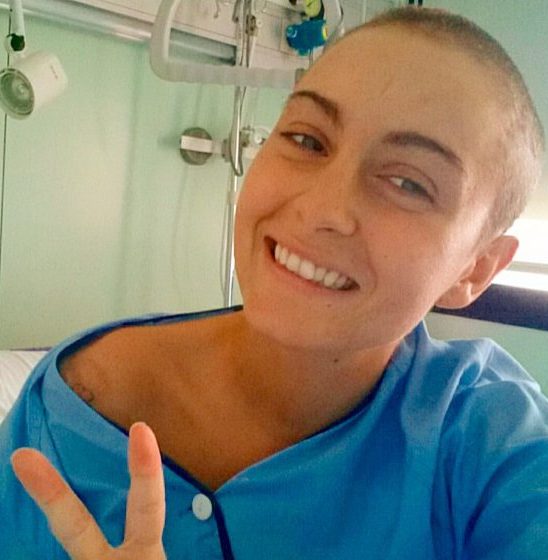
Ares
Acute lymphoblastic leukaemia.
“When I
was 26 years old I was diagnosed with acute lymphoblastic leukaemia with
Philadelphia+ chromosome. This type of leukemia always requires a bone marrow
transplant. I was very lucky because the Josep Carreras Foundation found me a
100% compatible donor. I will never be able to thank my donor in person for her
selfless act that saved my life. My donor lost nothing by doing it and I gained
EVERYTHING: being here, breathing, getting up every morning and seeing the
faces of my family and friends, LIVE, something that seems so simple but for
many people it is not.”
Questions and answers regarding bone marrow donation and specific diseases
If more than 4 months have passed since you have done so, you can register as a bone marrow donor or, if you are already registered, you can make the donation effective if the case arises.
Yes, you can register without any problem while breastfeeding. If are already registered and are required to effectively donate, you would be required to suspend breastfeeding at least for the days during which you, as the donor, are administered growth factors (4-5 days) or anaesthesia (1-2 days).
Yes, you can register without any problem and without any harm to your pregnancy. If you are already registered and have to donate, you cannot do so during your pregnancy and for 6 months after giving birth. It is important to inform the bone marrow donor registry in order to temporarily deregister.
If you have lived in the United Kingdom (England, Scotland, Wales, Northern Ireland, Isle of Man) during that time and for more than one year, no you cannot. Since 2001, the Spanish Ministry of Health has established this exclusion criterion for blood and bone marrow donation. It is an extreme precautionary measure, primarily for the preparation of blood products. The aim is to avoid even the slightest risk of transmitting the variant of Creutzfeld Jacob’s disease or ‘mad cow disease’ to Spanish blood recipients. Nor can you register as a bone marrow donor if you have received a bone marrow transfusion in that country.
First of all, you have to let us know by sending us an e-mail to donantes@fcarreras.es or by calling us on 93 414 55 66 so that we can process your deregistration. If you are going to live temporarily (less than 2 years), we can arrange a temporary leave of absence and, when you return to live in Spain, we will re-register you. If you are moving to another country permanently and you move to a country that has a similar registry, you can ask us to send your HLA typing and your application for transferring your file to this country. If the country you are going to live in does not have a similar registry, you can only deregister from REDMO.
Yes, although we recommend that you stop this habit, since it is harmful to your health.
We are sorry, but no. International regulations state that only people who are 18 years of age or above can register as bone marrow donors.
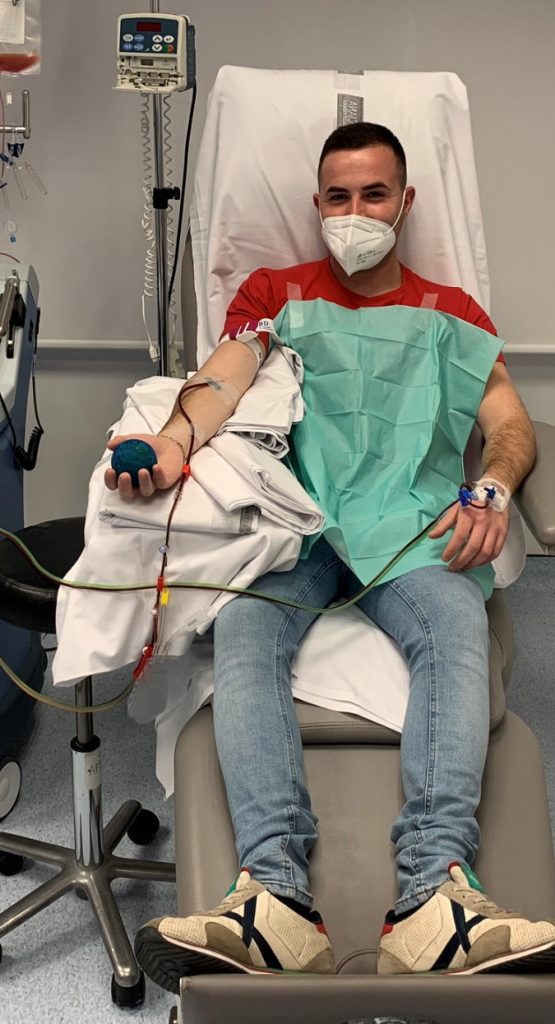
Víctor
Bone marrow donor.
“It all started when, in a blood donation campaign in my town, I registered as a bone marrow donor. The truth is that I thought I would never manage to donate, since the probability of being compatible with someone who is not from your family is very small. But at the end of 2021 I received a call from the Josep Carreras Foundation’s REDMO program: there was a person compatible with me. For me, the day of the donation was super special, as I was able to share some time with an Unstoppable girl who had undergone a bone marrow transplant a few years before. She made me see how grateful all the Unstoppables are to the donors and her words were very touching for me”.
Become a member of the cure for leukaemia!

